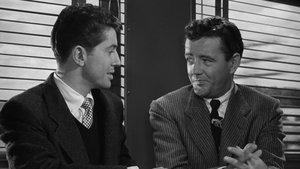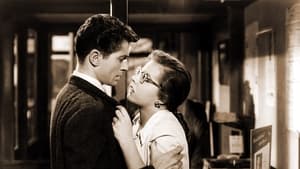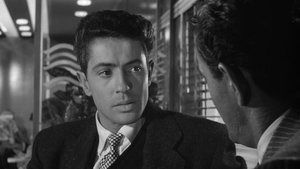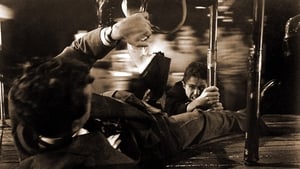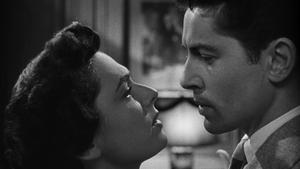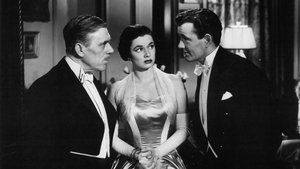Contact: [email protected]
Video Sources 0 Views
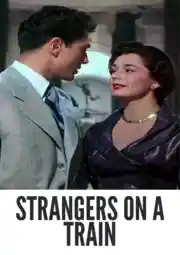
Synopsis
[ez-toc]




Introduction
In the realm of classic cinema, the debate between the allure of the old and the excitement of the new has raged for years. One particularly intriguing aspect of this discussion is the process of colorization, a technique that breathes life into the black-and-white landscapes of old movies. In this exploration, we delve into the recent colorized version of the 1951 psychological thriller “Strangers on a Train Colorized,” directed by the legendary Alfred Hitchcock. This article aims to dissect the impact of colorization on this cinematic masterpiece, offering a nuanced perspective on the balance between preserving authenticity and creating a more immersive experience for modern audiences.
Read Media File Transfer Agreement: Terms and Conditions
Read FAQ
The Art of Colorization: A Brief Overview
To comprehend the significance of colorization, it’s essential to grasp the intricate process behind it. Colorization involves digitally adding color to black-and-white films, a meticulous procedure that requires a delicate touch to respect the original artistic vision. This restoration technique aims to enhance the viewing experience, allowing audiences to connect with classic films in a way that transcends the limitations of the era they were created in.
The Significance of “Strangers on a Train Colorized” in Cinema History
Master of Suspense: Alfred Hitchcock’s Cinematic Triumph
“Strangers on a Train Colorized” holds a special place in the pantheon of Alfred Hitchcock’s works, showcasing his mastery of suspense and psychological thrills. Released in 1951, the film stands as a testament to Hitchcock’s ability to weave gripping narratives that linger in the minds of audiences. The source material, Patricia Highsmith’s novel, provided a rich foundation for Hitchcock to explore the depths of human psychology and deliver a film noir gem that continues to captivate viewers to this day.
Understanding the Art of Colorization
Breathing New Life into the Classics: The Colorization Process
Colorization is not merely a splash of paint on a black-and-white canvas. Modern technology employs advanced algorithms and meticulous attention to detail, ensuring that the hues added align with the artistic intent of the original creators. This delicate balance between restoration and enhancement is crucial in preserving the essence of classic films while making them more accessible to contemporary audiences.
The Role of Colorization in Film Preservation
As the film industry evolves, so does the need for preserving cinematic treasures. Colorization emerges as a powerful tool in the arsenal of film preservation, offering a chance for old movies to be rediscovered and appreciated by a new generation. By breathing life into these classics, colorization bridges the gap between the past and present, ensuring that the magic of Hitchcock’s era remains relevant.
Analyzing the Decision to Colorize “Strangers on a Train Colorized”
A Visual Renaissance: Does Colorization Complement the Narrative?
The decision to colorize “Strangers on a Train Colorized” raises intriguing questions about the impact on visual storytelling. Does the addition of color enhance or detract from the film’s original techniques? Exploring this aspect requires a delicate balance, considering whether the colorized version aligns with Hitchcock’s vision or introduces a new layer that transforms the narrative dynamics.
The Impact of Color on the Narrative Experience
Painting Emotions: Color’s Aesthetic Influence
As we delve into the colorized edition of “Strangers on a Train Colorized,” it becomes evident that the use of color extends beyond a mere cosmetic alteration. It serves as a tool to intensify emotions, shape atmospheres, and redefine character dynamics. The interplay of hues adds a layer of depth to the narrative, inviting audiences to experience the psychological tension in a more visceral and immersive manner.
Controversy and Debate: Preserving Authenticity in Colorized Films
The Battle for Authenticity: A Conundrum for Film Purists
Colorization, however, is not without its fair share of criticism. Film purists argue that altering the original black-and-white cinematography compromises the artistic integrity and historical accuracy of classic films. The debate intensifies as we weigh the importance of preserving the purity of the past against the potential for colorization to attract new audiences and ensure the longevity of these cinematic treasures.
Counter-argument: Embracing Change for the Sake of Preservation
In defense of colorization, proponents argue that embracing new technologies can breathe fresh life into old classics. By presenting these films in a more relatable format, colorization has the potential to introduce iconic works to a broader audience, securing their place in the annals of film history.
The Cast in Living Color
Farley Granger, Ruth Roman, Robert Walker: A Technicolor Ensemble
As we shift our focus to the cast of “Strangers on a Train Colorized,” the colorized version allows audiences to witness the performances of Farley Granger, Ruth Roman, and Robert Walker in a new light. The addition of color brings out subtleties in their expressions, adding nuance to their portrayals and making the characters more tangible for contemporary viewers.
Revisiting Key Scenes: Colorful Highlights from “Strangers on a Train Colorized”
The Chromatic Tapestry of Suspense
Certain scenes in “Strangers on a Train Colorized” stand out as prime examples of the colorization process elevating the psychological tension and suspense. From the ominous carousel sequence to the riveting tennis match, colorization adds a layer of intensity, drawing audiences deeper into the intricate web of Hitchcock’s narrative.
The Pros and Cons of Colorization in Film Restoration
Balancing Act: Weighing Visual Appeal Against Artistic Authenticity
As with any film restoration technique, colorization comes with its set of pros and cons. The visual appeal of colorized classics is undeniable, but at what cost? Evaluating the benefits and limitations requires a nuanced approach that considers both the aesthetic enhancements and the potential loss of the original artistic intent.
Preserving the Legacy of “Strangers on a Train Colorized”
A Pledge for Preservation: Nurturing Cinematic Heritage
In the grand tapestry of film history, “Strangers on a Train Colorized” holds a pivotal place. Efforts to preserve and restore such classics are essential, ensuring that future generations can appreciate the ingenuity of Hitchcock’s masterwork. Striking a balance between technological advancements and the reverence for the original artistic vision becomes imperative in safeguarding these cinematic treasures.
The Enduring Influence of Hitchcock’s Masterpiece
Legacy Unveiled: A Cinematic Analysis
“Strangers on a Train” extends its influence far beyond its release date, shaping the thriller genre and inspiring generations of filmmakers. Hitchcock’s ability to weave intricate plots and create suspenseful atmospheres remains a benchmark for cinematic excellence, with “Strangers on a Train Colorized” standing as a beacon of his enduring legacy.
Embracing the Old and the New: A Case for Colorized Classics
A Fresh Perspective: Inviting Audiences to Explore
In concluding our exploration, we advocate for embracing colorized versions of classic films like “Strangers on a Train Colorized.” These adaptations offer a fresh perspective on timeless tales, allowing audiences to engage with the material in ways previously unimagined. By appreciating the diversity of film restoration techniques, viewers can enrich their understanding and enjoyment of cinema history.
Where to Watch Colorized Films
Finding Technicolor Treasures: Navigating Streaming Platforms and Collections
For cinephiles eager to explore the world of colorized classics, various streaming platforms and curated DVD/Blu-ray collections provide a gateway. Legal sources ensure high-quality presentations, allowing audiences to witness the vibrancy of colorization while supporting the ongoing efforts to preserve cinematic heritage.
Conclusion
In the ever-evolving landscape of cinema, the allure of old movies persists, drawing audiences into the enchanting worlds crafted by visionary filmmakers. The recent colorized version of “Strangers on a Train” stands as a testament to the delicate balance between preserving authenticity and ushering classic films into the modern era. As we bid adieu, the call-to-action echoes loud and clear: Watch the colorized version of “Strangers on a Train” and other film restoration marvels. Engage in discussions, appreciate the artistry of the past, and ensure the legacy of these cinematic gems endures for generations to come.
